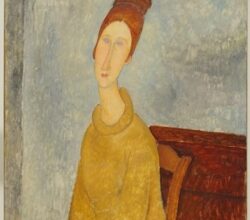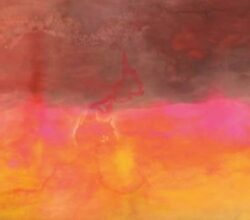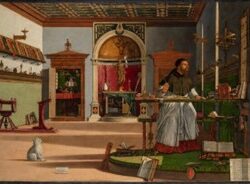
He may have been an antisemite, but he knew great Jewish art when he saw it
Diane Cole | Forward | 31st October 2022
When Modigliani died in 1920 the contents of his studio were lost. A team of historians and conservators is working to fill gaps in our knowledge of his working methods. Some examples. His stylized oval faces only appeared after a mid-career detour into sculpture. His colours were complex – “a black is never just a black; he also introduces blues and reds”. Far from his reputed wild bohemian ways, Modigliani the artist was “stylistically restrained and highly skilled”. Images are here.


